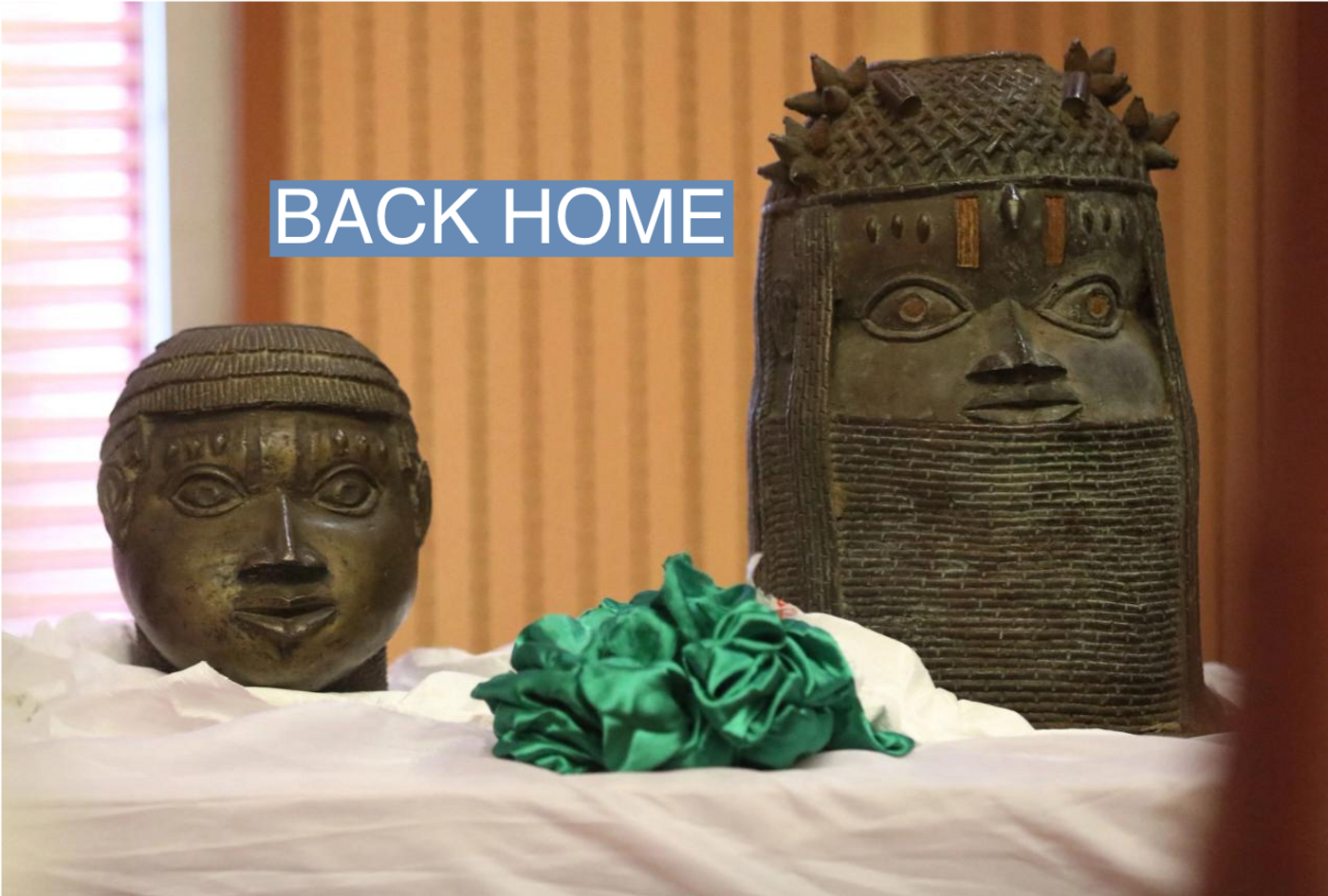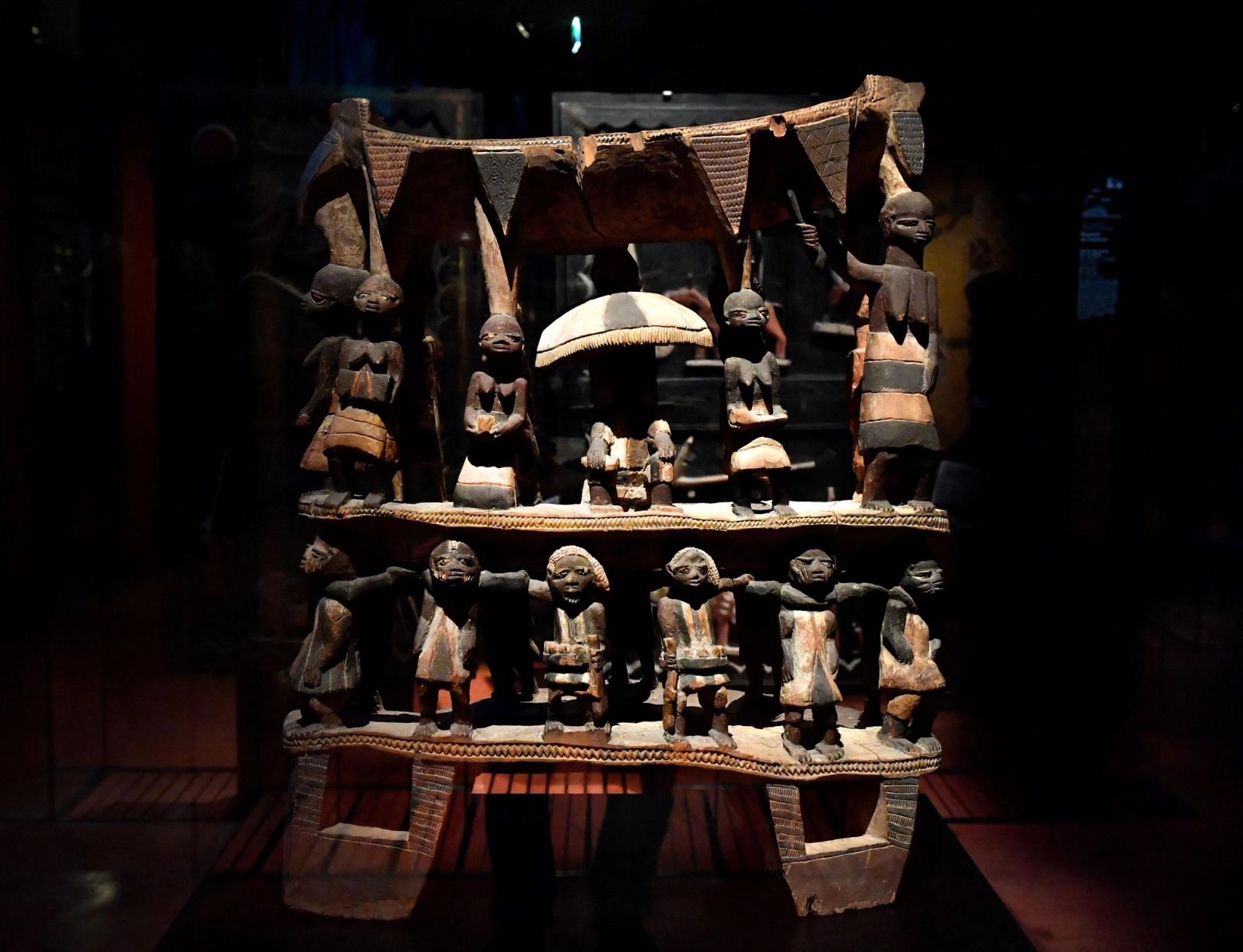Published 23rd April 2023

Credit: Courtesy Laura Young
Written by Sara Smart, CNN
From its time in Germany during World War II to the shelves of a Texas Goodwill, a 2,000-year-old Roman bust is making its way back home.
In 2018, Laura Young purchased the bust for just $34.99 at an Austin-area Goodwill, unaware of its ancient history. "I was just looking for anything that looked interesting," Young told CNN last May.
The bust was lent out from Munich's Glyptothek to the San Antonio Museum of Art for the past year and next month it will be returned to Germany.
"It's been really bittersweet," Young told CNN on Thursday. "I'm a little in denial, but I do plan on visiting him in Germany."
When researching where the bust came from last year, Young was put in contact with Sotheby's, which confirmed that the bust was estimated to be about 2,000 years old.
The identity of the bust is not certain yet, but the team at SAMA told CNN they believe it resembles the Roman military leader Sextus Pompey.
"I, along with some other scholars who worked from photographs of the German example after its disappearance, have suggested Sextus Pompey, based on similarities to portraits of his father, Pompey the Great, and to the coin that was included on the label in SAMA's exhibition of the portrait, which has a portrait of Sextus on it." Lynley McAlpine, a postdoctoral curatorial fellow at SAMA, said.

The portrait displayed in the courtyard of the Pompejanum, Aschaffenburg, 1931. Credit: From Bavarian Administration of State-Owned Palaces, Gardens and Lakes
The bust was originally housed in a replica of a Pompeii home, also known as Pompejanum, and was moved to storage just before the building was destroyed during the war.
It is then believed that around the 1950s a US soldier stole the bust and brought it to the US, which is how it eventually ended up at the thrift store and in the hands of Young.

Laura Young bought the 52-pound marble Roman bust for $34.99 at an Austin-area Goodwill. Credit: Courtesy Laura Young
For the past year, the 52-pound marble bust has been seen by thousands of guests at SAMA, including the Archduke Carl Christian of Austria and San Antonio Mayor Ron Nirenberg.
May 21 will be the artifact's last day at the museum, when it will then be shipped back to Germany.
SAMA says the bust will join two other Roman sculptures from the museum and will travel back to Germany to be together again for the first time in years.
A representative from Glyptothek will oversee the packing process of the artifacts and personally shepherd them back to their home.


THE SCENE
BENIN CITY, Nigeria — One of the most recognizable landmarks when flying into the ancient city of Benin in Nigeria, home of the prestigious Benin bronzes, is the red cylindrical National Museum.
On a recent visit on a Saturday, the museum was unexpectedly quiet, with just two visitors during the two hours I was there. It was the first visit for both of them, one a Benin City resident, and they had been hoping to see Benin artifacts that had been returned to Nigeria. The museum’s curator, Mark Olaitan, said the returned items "haven’t been mounted or exhibited yet."
The museum visitor numbers have risen slowly since the end of restrictions on movement imposed during the COVID-19 pandemic, and Olaitan predicted confidently that the museum would soon be overwhelmed by the volume of visitors when exhibitions featuring the returned items are fully opened to the public.

KNOW MORE
The majority of African artifacts in museums are held outside Africa, with more than half a million in European institutions alone. Over 4,000 objects looted from Benin City by British soldiers in 1897 (pictured below) — commonly referred to as the Benin Bronzes — are among the most notable of these artifacts. They have been at the forefront of campaigns calling for the restitution of African artifacts.

Museums and universities in Europe and America last year began returning looted Benin artifacts in their collections to Nigeria, nearly a century after traditional ruler Oba Akenzua II championed the demand for restitution in 1935.
Last year the governments and intuitions of the United States, United Kingdom, and Germany transferred the "ownership" of about 121 Benin artifacts to Nigeria. The transfers often involve agreements whereby some of these objects remain in these foreign museums on loan. Olaitan said agreements signed by Nigeria with other countries include “capacity building, staff training, [and] exchange programs” that would help improve Nigerian museums.
The global campaign for the return of the bronzes has attracted investment to Edo state to build a cultural district in Benin City. The investment includes the building of the Edo Royal Museum, the Edo Museum of West African Arts (EMOWAA) with the EMOWAA Pavilion (research and educational facility), and Benin City Mall amongst other features.
Olaitan is optimistic that the construction of these buildings as well as the staffing of these institutions will create job opportunities and attract visitors to the state, particularly leisure tourists.

UWAGBALE'S VIEW
The return of artifacts like these is an opportunity for African countries to reap huge economic benefits. Governments can boost revenues through museum attendance as well as through money spent by visitors, from hotel accommodation to restaurants and souvenir shops. A multi-layered domestic and international tourism industry also creates jobs.
The United Kingdom has shown the economic benefits of displaying cultural artifacts — many of which were plundered from Africa. In just three months between April and June 2022, some 8.3 million people visited the country’s 15 government-sponsored museums and galleries including the British Museum, which has the single largest collection of Benin bronzes in the world. Those visitor numbers are still down from between 11 million to 14 million each year before the pandemic. These museums and galleries contributed £73 million ($88 million) to the British economy in June 2022.
The Edo state government is working on ways to replicate that success once the items have been returned home. The state, leveraging its rich cultural heritage, launched a tourism master plan in September 2022. The plan includes the development of a tourism corridor connecting about 72 different tourism sites including a wildlife park, and cultural and natural sites, with the government targeting 2 trillion naira ($4.3 billion) of tourism revenue in the next 10 years.
"The artifacts being returned to Africa present a strong opportunity to develop cultural heritage tourism seriously," said Adunola Okupe, the CEO of tourism consultancy Red Clay Advisory which has experience across West Africa. "There is a strong multiplier effect that will generate even more returns to other industries than tourism alone."

THE VIEW FROM COTONOU
The modern-day Republic of Benin, to the west of Nigeria, is not to be confused with Nigeria’s Benin City. The West African country, which was colonized by France, was once dominated by the Dahomey Kingdom which produced many great art works. Today Benin Republic is developing its own cultural heritage tourism.

With the return, in November 2021, of 26 artifacts looted by France’s colonial troops, its government announced the creation of the Museum of the Epic of the Amazons and Kings of Dahomey in Abomey to house the items returned along with a collection of some 350 art objects.
The project includes the rehabilitation of four royal palaces that attracted a grant and a loan $38 million from the French Development Agency (AFD). A free exhibition last year which lasted several months reportedly attracted more than 200,000 visitors with domestic visitors making up 90% of the total.

ROOM FOR DISAGREEMENT
While there’s been much public and government support in both African countries and former colonial powers for the return of artifacts, there has been some push back. Some European curators have gone as far as questioning if these valuable items would be well preserved in countries without a strong museum tradition or investment.
There has been displeasure from unexpected quarters as well. An African-American campaign group filed a lawsuit in November 2022 to stop the return of some Benin Bronzes from the Smithsonian Museum to Nigeria, arguing that returning the bronzes would deny them the opportunity to experience their shared culture and history. They claimed the artifacts are also part of their heritage as descendants of an enslaved person from the region controlled by ancient Benin.

NOTABLE
While the push to return artifacts feels very much a late post-colonial movement in the age of Black Lives Matter and South Africa’s Rhodes Must Fall — it is not. Back in the sixties, the decade of independence for many African countries, there was a strong push for the return of artifacts but for a variety of reasons it had faded by the eighties.















